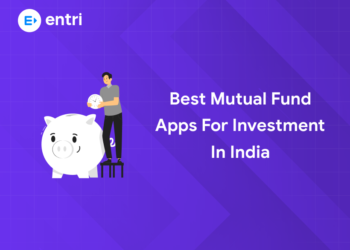Table of Contents
Gearing up for your EY Data Engineer Interview? Well, You have come to the right page! Here we will help you prepare for your EY Data Engineer Interview by discussing common interview questions, sharing some efficient tips and understanding the EY interview process.
Enhance your data science skills with us! Join our free demo today!
Introduction
Becoming a Data Engineer at Ernst & Young (EY) is a rewarding opportunity for professionals skilled in data processing, ETL, cloud technologies, and big data frameworks. EY, one of the Big Four consulting firms, is known for its focus on data-driven decision-making and offers a dynamic work environment for Data Engineers.
If you’re preparing for an EY Data Engineer interview, this guide will help you understand the interview process, review commonly asked technical questions, and provide best practices to help you succeed.
Understanding the Interview Process at EY
1: Which of the following algorithms is most suitable for classification tasks?
The EY Data Engineer interview process typically consists of multiple rounds assessing technical skills, problem-solving ability, and cultural fit. The process generally includes:
1. Online Assessment (Coding & SQL Test)
- Tests knowledge of SQL, Python, Spark, and ETL concepts.
- May include multiple-choice questions and hands-on coding challenges.
- Focuses on query optimization, data manipulation, and algorithmic problem-solving.
2. Technical Interview
- Covers data modeling, database management, and cloud technologies.
- Hands-on coding tasks in Python, SQL, and ETL workflows.
- Discussion on past projects related to big data and data pipelines.
3. HR & Behavioral Interview
- Assesses communication skills and teamwork abilities.
- Questions on previous work experience, problem-solving approach, and alignment with EY’s values.
The entire interview process can take 2-3 weeks, depending on the role and number of interview rounds.
 Start Coding Today! Enroll Now with Easy EMI Options.
Start Coding Today! Enroll Now with Easy EMI Options. 

Equip yourself with in-demand skills to land top-tier roles in the data-driven world.
Start Learning Now with EMI OptionsEY Data Engineer Interview Questions
Below are some commonly asked questions in the EY Data Engineer interview, along with structured answers to help you prepare.
Basic Level Questions
Q1. What is Data Engineering?
Answer:
Data Engineering involves designing, developing, and managing data pipelines that enable efficient storage, processing, and analysis of large datasets. It includes:
- Extracting data from various sources.
- Transforming and cleaning data for analysis.
- Loading data into databases or data warehouses (ETL).
- Working with big data technologies and cloud platforms.
Q2. Explain the difference between OLTP and OLAP databases.
Answer:
| Feature | OLTP (Online Transaction Processing) | OLAP (Online Analytical Processing) |
|---|---|---|
| Purpose | Transactional Processing | Analytical Queries |
| Operations | Insert, Update, Delete | Read-heavy, Aggregation |
| Data Size | Small, frequent transactions | Large historical data |
| Examples | MySQL, PostgreSQL | Redshift, Snowflake, BigQuery |
Q3. How does a Data Warehouse differ from a Data Lake?
Answer:
| Feature | Data Warehouse | Data Lake |
|---|---|---|
| Structure | Highly structured, schema-on-write | Stores raw data, schema-on-read |
| Data Type | Processed, aggregated data | Raw, semi-structured, and unstructured data |
| Use Case | Business Intelligence, reporting | Machine learning, real-time analytics |
| Examples | Amazon Redshift, Snowflake, Google BigQuery | AWS S3, Azure Data Lake, Google Cloud Storage |
Enhance your data science skills with us! Join our free demo today!
Intermediate Level Questions
Q4. Can you explain ETL vs. ELT and when to use each?
Answer:
- ETL (Extract, Transform, Load): Data is transformed before being loaded into the data warehouse. Ideal for structured environments with strict schema requirements.
- ELT (Extract, Load, Transform): Data is first loaded raw into storage and transformed later. Used in cloud-based architectures where scalability is key.
Example:
- ETL: Traditional BI tools like Informatica, Talend.
- ELT: Modern cloud-based platforms like Snowflake, BigQuery.
Q5. What techniques can optimize SQL query performance?
Answer:
To enhance SQL performance, follow these best practices:
- Use Indexing to speed up searches and joins.
- **Avoid SELECT *** and fetch only the required columns.
- Normalize or partition tables for better storage and retrieval.
- Use caching mechanisms for frequently queried data.
- Optimize JOIN operations by selecting appropriate join strategies.
Example of using an Index:
Q6. How does Apache Spark differ from Hadoop MapReduce?
Answer:
| Feature | Apache Spark | Hadoop MapReduce |
|---|---|---|
| Processing Speed | Faster (in-memory processing) | Slower (disk-based) |
| API Support | Supports Java, Scala, Python, R | Java-based |
| Use Case | Real-time and batch processing | Primarily batch processing |
| Ease of Use | Simple, high-level APIs | Requires complex coding |
Example of PySpark DataFrame operation:
Advanced Level Questions
Q7. How would you design a scalable data pipeline for real-time analytics?
Answer:
A real-time data pipeline can be built using:
- Apache Kafka for ingesting real-time streaming data.
- Apache Spark Streaming or Apache Flink for processing data.
- NoSQL databases like MongoDB or Cassandra for fast data storage.
- Cloud data lakes (AWS S3, Azure Data Lake) for storing historical data.
Example architecture:
Kafka → Spark Streaming → Data Warehouse → BI Tool (Tableau, Power BI)
Q8. How do Snowflake, Redshift, and BigQuery compare?
Answer:
| Feature | Snowflake | Redshift | BigQuery |
|---|---|---|---|
| Scaling | Automatic scaling | Manual resizing | Fully managed |
| Pricing Model | Pay-as-you-use | Fixed cluster pricing | Pay-per-query |
| Performance | Elastic and fast | Good for AWS ecosystem | Best for ad-hoc queries |
If working in an AWS ecosystem, Redshift may be preferable. For highly dynamic workloads, Snowflake is a strong choice.
Q9. What is Data Partitioning, and why is it useful?
Answer:
Partitioning splits large datasets into smaller, manageable chunks to improve query performance and storage efficiency.
- Horizontal Partitioning: Dividing a table by rows (e.g., partition by date).
- Vertical Partitioning: Splitting columns into separate tables.
- Sharding: Distributing data across multiple servers to handle high traffic loads.
Example of SQL partitioning:
Q10. How do you ensure data quality in ETL pipelines?
Answer:
To maintain data integrity and accuracy, implement:
- Automated validation checks to detect missing or inconsistent data.
- Schema evolution to handle changing data structures.
- Data deduplication techniques to remove duplicate records.
- Logging and monitoring for real-time pipeline health tracking.
Example of a Python data quality check:
Tips & Best Practices for Data Engineer Interviews at EY
1. Master SQL and Data Modeling
- Practice complex SQL queries involving Joins, Window Functions, and Indexing.
- Understand data normalization and denormalization techniques.
2. Gain Hands-on Experience with ETL Tools
- Work on data ingestion pipelines using Apache Airflow, Talend, or AWS Glue.
- Understand incremental vs. full ETL loads.
3. Learn Big Data Technologies
- Gain experience in Hadoop, Spark, and Kafka for distributed data processing.
- Explore PySpark and SparkSQL for big data transformations.
4. Get Familiar with Cloud Platforms
- Learn AWS (S3, Redshift, Lambda), Azure (Data Factory, Synapse Analytics), or Google Cloud (BigQuery, DataFlow).
5. Prepare for Behavioral & Scenario-Based Questions
- Example: “Describe a time when you handled data inconsistencies in a pipeline.”
- Use the STAR method (Situation, Task, Action, Result) to structure responses.
Conclusion
Preparing for an EY Data Engineer interview requires expertise in SQL, ETL workflows, big data frameworks, and cloud technologies. By practicing real-world data scenarios, optimizing SQL queries, and understanding data pipeline architectures, you can increase your chances of success.
Keep learning, build hands-on projects, and refine your problem-solving skills to land your dream job at EY!
Enhance your data science skills with us! Join our free demo today!
 Start Coding Today! Enroll Now with Easy EMI Options.
Start Coding Today! Enroll Now with Easy EMI Options. 

Equip yourself with in-demand skills to land top-tier roles in the data-driven world.
Start Learning Now with EMI OptionsFrequently Asked Questions
What is the interview process for a Data Engineer role at EY?
EY’s Data Engineer interview process generally consists of:
- Online Assessment – Tests SQL, Python, and data processing skills.
- Technical Interview – Covers ETL pipelines, cloud technologies, and big data frameworks.
- HR Interview – Assesses communication skills, problem-solving ability, and cultural fit.
What technical skills are required for a Data Engineer at EY?
EY expects candidates to have strong knowledge of:
- SQL (Joins, CTEs, Indexing, Window Functions).
- Python or Scala for data processing.
- Big Data tools (Apache Spark, Hadoop, Kafka).
- ETL workflows (Informatica, Apache Airflow, AWS Glue).
- Cloud platforms (AWS, Azure, GCP).
What SQL topics should I focus on for the EY Data Engineer interview?
Candidates should be proficient in:
- Joins (INNER, LEFT, RIGHT, FULL OUTER).
- Common Table Expressions (CTEs) and Subqueries.
- Aggregation Functions (SUM, COUNT, AVG, GROUP BY, HAVING).
- Indexing and Query Optimization.
- Window Functions (ROW_NUMBER, RANK, DENSE_RANK, LEAD, LAG).
What programming languages are most commonly used for Data Engineering at EY?
The most important languages include:
- Python – Used for data transformation, automation, and ETL processing.
- SQL – Essential for querying databases and performing data transformations.
- Scala/Java – Used in big data frameworks like Apache Spark and Hadoop.
What Big Data technologies does EY use?
EY utilizes various big data frameworks, including:
- Apache Spark – For distributed data processing.
- Hadoop (HDFS, MapReduce, Hive) – For handling large datasets.
- Kafka – For real-time streaming data pipelines.
- NoSQL Databases (MongoDB, Cassandra, DynamoDB) – For storing unstructured data.
What are some common ETL-related questions in the EY Data Engineer interview?
EY often asks about:
- Difference between ETL and ELT.
- How to design scalable ETL pipelines.
- Best practices for data transformation and error handling.
- Real-time vs. batch data processing in ETL workflows.
What cloud platforms does EY primarily use for data engineering?
EY works with:
- AWS (Amazon S3, Redshift, Glue, Lambda).
- Azure (Azure Data Factory, Synapse Analytics, Blob Storage).
- Google Cloud (BigQuery, DataFlow, Cloud Storage).
What behavioral questions can I expect in the EY interview?
Common behavioral questions include:
- “Describe a time when you had to handle a large dataset and optimize performance.”
- “How do you approach troubleshooting data pipeline failures?”
- “Tell me about a challenging data engineering project you worked on and how you solved it.”
How should I prepare for the EY Data Engineer interview?
- Practice SQL queries on platforms like LeetCode and StrataScratch.
- Work on Python-based data transformation tasks.
- Build an end-to-end data pipeline project using ETL tools and big data frameworks.
- Review case studies on cloud-based data architectures.
What resources can help me prepare for the EY Data Engineer interview?
- SQL Practice – LeetCode, Mode Analytics, SQLZoo.
- Big Data & Spark – Coursera (Big Data Specialization).
- Cloud Data Engineering – AWS Certified Data Analytics Course.
- Python & ETL – Kaggle, DataCamp, GitHub projects.











